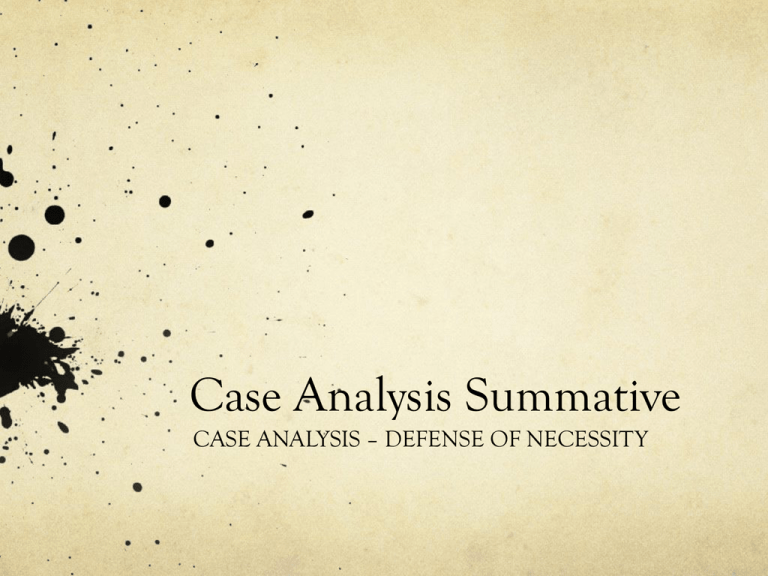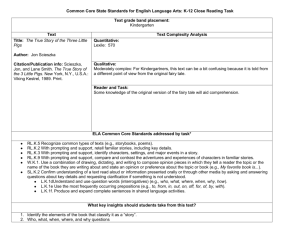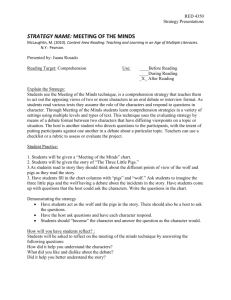
Case Analysis Summative
CASE ANALYSIS – DEFENSE OF NECESSITY
The Assignment Details…
LEARNING GOAL:
I will understand the concept of legal significance through the analysis of a legal case.
SUCCESS CRITERIA:
I will define legal terms like defense of necessity and murder
I will identify facts relevant to the specific case studied.
I will identify a clear legal issue.
I will submit a clear, defined legal opinion on a specific case.
I will support this decision by applying my knowledge of the law to the relevant facts of
the case.
Case Analysis Format –
4 sections:
#1
FACTS:
List the key facts from the case
Use only the facts that will be relevant to answering the
key issue in the case – be concise
Make sure that the facts tell a logical story; the reader
needs to understand the story told
Proof-read your facts
#2
ISSUE:
Identify the key legal problem that needs to be
addressed in the case analysis
Keep it to a single sentence unless there is a follow-up
issue
Write the issue in a question format
Do not provide an answer
#3
DECISION:
Answer the question asked in the issue, nothing else
Keep your answer to a single sentence response
Do not provide any reasons for your answer
#4
REASONING:
This is the section where you explain your answer
Your answer should be explained using two paragraphs
The first paragraph explains all legal concepts covered in the case
The first paragraph can use definitions to explain the legal concepts
Your second paragraph will apply your understanding of the law to the facts of
the case
Make specific reference to the facts of the case
This is the most extensive part of your case analysis, make it detailed and
specific
You will need some legal
background to do this case
analysis…
Criminal Code Definition of
Murder:
The Criminal Code defines murder as killing someone
where the killer meant to cause the person's death or
meant to cause bodily harm that was likely to result in
their death. There are two degrees of murder:
By The Vancouver Sun - December 10, 2007
First-degree murder is when the killing is "planned and deliberate." In other words,
where the murder was premeditated. However, some killings that aren't premeditated are
still automatically first-degree, such as the killing of a police officer or when the killing
takes place during the commission of a hijacking, kidnapping or sexual assault. Those
convicted of first-degree murder receive an automatic life sentence with no chance of
parole for 25 years.
Second-degree murder is defined in the Code as all murders that are not first-degree
but where the killing was still intentional.
Generally speaking, it applies to those murders that are "spontaneous" and weren't planned
in advance. For example, a husband who had no plans to kill his wife but, once they started
fighting, meant to kill her. As with first-degree murder, those convicted of second-degree
receive an automatic life sentence. However, the judge can set their parole eligibility at
anywhere between 10 and 25 years.
AND -
Manslaughter is defined in the code as a culpable (means: guilty) homicide (means:
killing) that is not murder -- in other words, where someone, such as a drunk driver,
killed another person unintentionally. Someone can also be found guilty of
manslaughter instead of murder if the killing was committed in the "heat of passion" as a
result of a provocation that would cause an ordinary person to lose self-control. There is
no mandatory minimum sentence for manslaughter but the maximum penalty is life in
prison.
Defense of Necessity:
Almost all common-law and statutory definitions of the necessity defense include the
following elements:
(1) the defendant acted to avoid a significant risk of harm;
(2) no adequate lawful means could have been used to escape the harm; and
(3) the harm avoided was greater than that caused by breaking the law. Some jurisdictions
require in addition that the harm must have been imminent and that the action taken must
have been reasonably expected to avoid the imminent danger.
All these elements mirror the principles on which the defense of necessity was founded:
first, that the highest social value is not always achieved by blind adherence to the law;
second, that it is unjust to punish those who technically violate the letter of the law when they
are acting to promote or achieve a higher social value than would be served by strict adherence
to the law; and
third, that it is in society's best interest to promote the greatest good and to encourage people
to seek to achieve the greatest good, even if doing so necessitates a technical breach of the law.
SOURCE: West's Encyclopedia of American Law, edition 2. Copyright 2008 The Gale
Group, Inc. All rights reserved
Let’s do an example:
Case: R. vs. The Three Little
Pigs
What are the facts?
http://www.youtube.com/watch?v=Olo923T2HQ4
Write them down as you watch:
What is the Issue?
What defense can the 3 Little Pigs Claim?
Write it as a question.
What is your Decision?
Answer your question in one sentence
No explanation or reasoning needed
What is your Reasoning for your
Decision?
Explain your answer in two paragraphs:
#1 - explain all legal concepts covered in the case - can
use definitions to explain the legal concepts
#2 - apply your understanding of the law to the facts of
the case - make specific reference to the facts of the case
This is the most extensive part of your case analysis,
make it detailed and specific
Share your ideas with the class…
Here’s what the finished
product should be like:
CASE ANALYSIS (EXAMPLE)
R. VS. THE THREE LITTLE PIGS
FACTS:
On July 4, 2001 the plaintiff otherwise known as the Big Bad Wolf threatened to kill the defendants, otherwise known as the Three Little Pigs
The Big Bad Wolf first attacked the First Little Pig at his straw house where he huffed and he puffed and he blew the house down
The First Little Pig escaped and ran to the Second Little Pig’s house to warn his brother
At the Second Little Pig’s house, made of sticks, the Big Bad Wolf huffed and puffed and blew the house down
Both Pigs escaped and made their way to the Third Little Pig’s house to warn him of an imminent attack by the Big Bad Wolf
At the Third Little Pig’s house, the Big Bad Wolf huffed and puffed but as the house was made of bricks, the house did not collapse
At this point the Big Bad Wolf attempted to enter the house through the chimney
The Three Little Pigs set a pot of boiling water at the base of the fireplace
When the Big Bad Wolf slid down the chimney he landed in the boiling water scalding 100% of his body
He rushed to the hospital where he was treated in the Severe Burn Unit
The Big Bad Wolf was listed in critical condition for three weeks before doctors were confident he would survive
The Three Little Pigs were subsequently charged with attempted murder
The Three Little Pigs claim they were acting in self defense
ISSUE:
Should the defense of self-defense be accepted in this case?
DECISION:
Self-defense rejected, the Three Little Pigs are guilty of
attempted murder
REASONING:
Paragraph 1:
The law defines attempted murder as an intentional action
that is likely to cause death. This includes actions where
there is no direct intent to cause death. This means that a
person can be charged with attempted murder even if there
was no desire to cause death. All that is required is the
knowledge that the action could or is likely to cause death.
Self-defense is defined as an action that is taken to defend
oneself or another against a crime or likely harm. However
the response must be a reasonable response to the threat.
The threat must be imminent and the response is not valid
if there was a more peaceful reasonable action possible.
REASONING:
Paragraph 2:
In the case of R. v. The Three Little Pigs, the Three Little Pigs
were clearly facing a threat from the Big Bad Wolf. The Wolf’s
intentions to cause harm to the Pigs were clear and the Pigs were
entitled to defend themselves in a reasonable manner. However,
the response was not a reasonable response. The Pigs clearly
ignored other possible ways to protect themselves. As the house
was strong enough to withstand the huffing and puffing of the
wolf, the harm was not imminent. The Pigs had an opportunity to
contact the local police from protection. As well, the Pigs could
have easily escaped the house once the Wolf made his descent
down the fireplace. Finally, another means instead of a boiling pot
of water could have been used to trap and subdue the Wolf.
Instead of taking these actions, the Pigs clearly chose a response
they knew was likely to cause severe harm and possible death to
the Wolf. The defense of self-defense is rejected in this case.
Just for FUN
Commercial featuring the guilty 3 Little Pigs:
http://www.youtube.com/watch?v=vDGrfhJH1P4
The Perspective of the Big Bad Wolf…
http://www.youtube.com/watch?v=vcsUfYBHhm4
Now it’s your turn…
CASE: The Queen v. Dudley and Stephens
Remember your success criteria…





